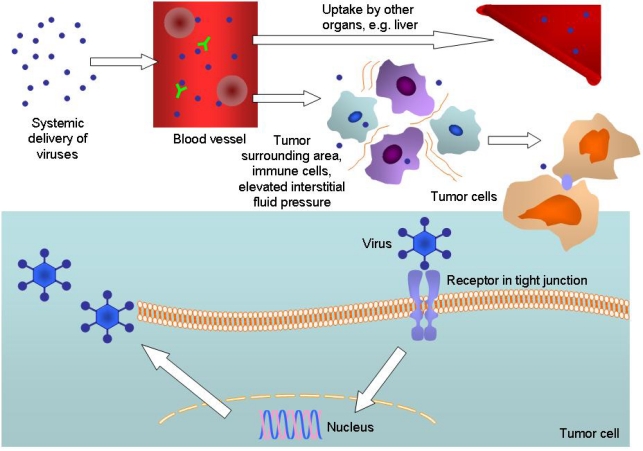Figure 3.
Obstacles to successful delivery of oncolytic viruses to tumor cells. After intravenous injection, viruses are neutralized by pre-existing antibodies and complement activation. Adenoviruses (Ads) also interact with blood cells. Recent work has revealed that Ad5 binds to erythrocytes via the Coxsackie and adenovirus receptor (CAR) and complement receptor 1 (CR1) in the absence and presence of anti-Ad5 antibodies, respectively [178]. Sequestration into other organs and the reticuloendothelial system is a particular problem, often with resulting toxicities. From the blood stream, viruses have to pass through a mixture of extracellular matrix, cells (including normal and immune cells) and high interstitial fluid pressure before reaching the tumor. They then have to attach to the cellular receptor (often trapped in tight junction), be internalized, translocate to the nucleus, replicate, produce structural and other proteins, lyse the cell and release their progenies – some of these steps could be inhibited by factors such as the natural host immune response, hypoxic environment, soluble factors, and genetic changes in the tumor cell.

